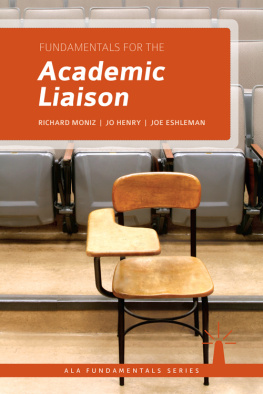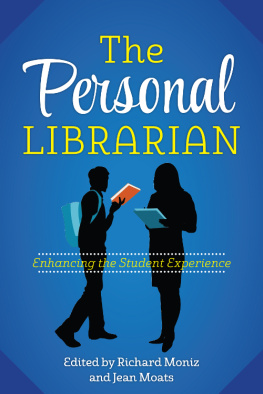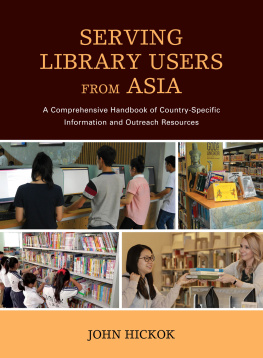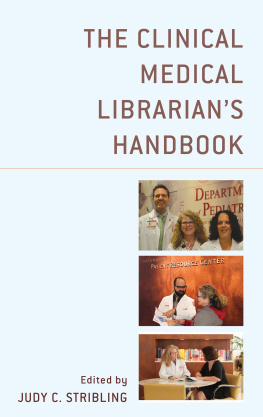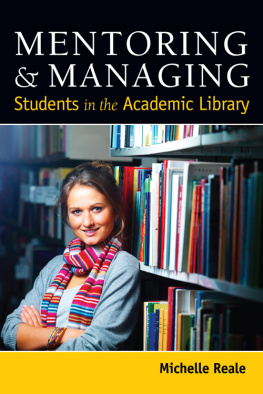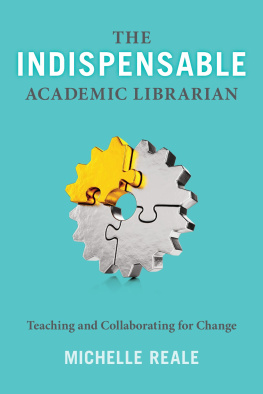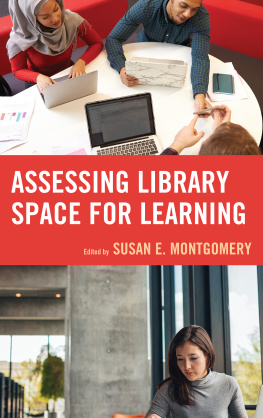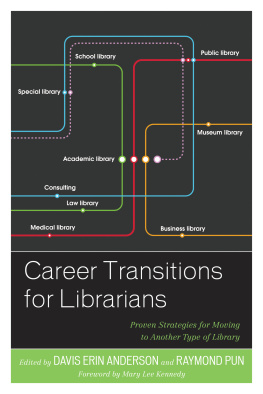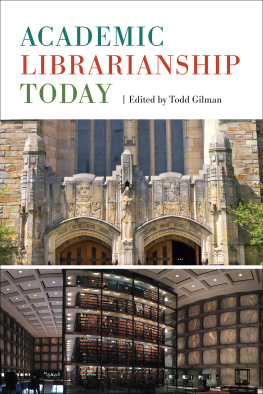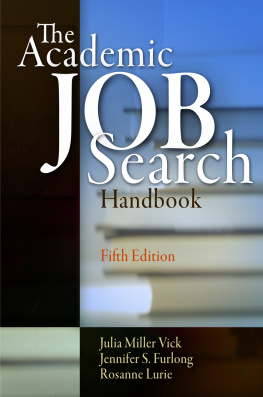Richard Moniz - Fundamentals for the Academic Liaison
Here you can read online Richard Moniz - Fundamentals for the Academic Liaison full text of the book (entire story) in english for free. Download pdf and epub, get meaning, cover and reviews about this ebook. year: 2014, publisher: American Library Association, genre: Home and family. Description of the work, (preface) as well as reviews are available. Best literature library LitArk.com created for fans of good reading and offers a wide selection of genres:
Romance novel
Science fiction
Adventure
Detective
Science
History
Home and family
Prose
Art
Politics
Computer
Non-fiction
Religion
Business
Children
Humor
Choose a favorite category and find really read worthwhile books. Enjoy immersion in the world of imagination, feel the emotions of the characters or learn something new for yourself, make an fascinating discovery.
- Book:Fundamentals for the Academic Liaison
- Author:
- Publisher:American Library Association
- Genre:
- Year:2014
- Rating:5 / 5
- Favourites:Add to favourites
- Your mark:
- 100
- 1
- 2
- 3
- 4
- 5
Fundamentals for the Academic Liaison: summary, description and annotation
We offer to read an annotation, description, summary or preface (depends on what the author of the book "Fundamentals for the Academic Liaison" wrote himself). If you haven't found the necessary information about the book — write in the comments, we will try to find it.
Fundamentals for the Academic Liaison — read online for free the complete book (whole text) full work
Below is the text of the book, divided by pages. System saving the place of the last page read, allows you to conveniently read the book "Fundamentals for the Academic Liaison" online for free, without having to search again every time where you left off. Put a bookmark, and you can go to the page where you finished reading at any time.
Font size:
Interval:
Bookmark:
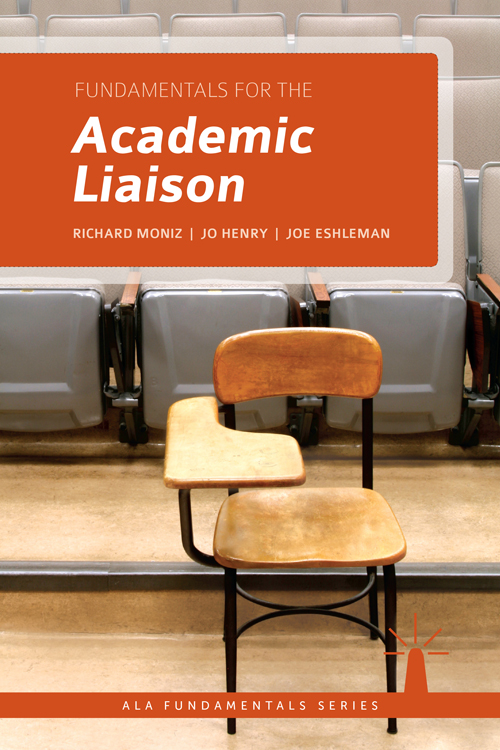
ALA Fundamentals Series
FUNDAMENTALS FOR THE ACADEMIC LIAISON
by Richard Moniz, Jo Henry, and Joe Eshleman
FUNDAMENTALS OF CHILDRENS SERVICES, 2ND ED.
by Michael Sullivan
FUNDAMENTALS OF LIBRARY INSTRUCTION
by Monty L. McAdoo
FUNDAMENTALS OF LIBRARY SUPERVISION, 2ND ED.
by Joan Giesecke and Beth McNeil
FUNDAMENTALS OF MANAGING REFERENCE COLLECTIONS
by Carol A. Singer
FUNDAMENTALS OF REFERENCE
by Carolyn M. Mulac
FUNDAMENTALS OF TECHNICAL SERVICES MANAGEMENT
by Sheila S. Intner, with Peggy Johnson
SMALL PUBLIC LIBRARY MANAGEMENT
by Jane Pearlmutter and Paul Nelson
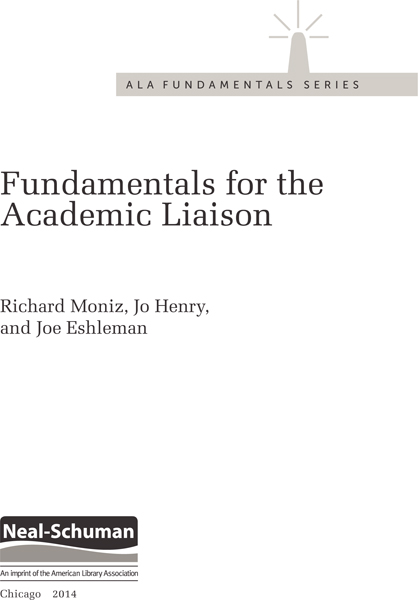
2014 by Richard Moniz, Jo Henry, and Joe Eshleman. Any claim of copyright is subject to applicable limitations and exceptions, such as rights of fair use and library copying pursuant to Sections 107 and 108 of the U.S. Copyright Act. No copyright is claimed for content in the public domain, such as works of the U.S. government.
Extensive effort has gone into ensuring the reliability of the information in this book; however, the publisher makes no warranty, express or implied, with respect to the material contained herein.
ISBNs: 978-1-55570-967-9 (paper); 978-0-8389-1988-0 (PDF); 978-0-8389-1989-7 (ePub); 978-0-8389-1990-3 (Kindle). For more information on digital formats, visit the ALA Store at alastore.ala.org and select eEditions.
Library of Congress Cataloging-in-Publication Data
Moniz, Richard J.
Fundamentals for the academic liaison / Richard Moniz, Jo Henry, and Joe Eshleman.
pages cm. (ALA fundamentals series)
Includes bibliographical references and .
ISBN 978-1-55570-967-9 (alk. paper)
1. Academic librariesRelations with faculty and curriculum. 2. Academic librariansProfessional relationships. 3. Academic librariansEffect of technological innovations on. I. Henry, Jo. II. Eshleman, Joe. III. Title.
Z675.U5M5755 2014
027.7dc23 2013050031
Cover image Terence/Shutterstock, Inc.
ALA Editions purchases fund advocacy, awareness, and accreditation programs for library professionals worldwide.
Contents
The role of the library and librarians on campus has changed dramatically in the past two decades. As most librarians are well aware, the library is no longer viewed as an isolated warehouse of books and the librarian no longer seen as a disconnected player in the higher education workplace. Despite prognostications to the contrary, the library and librarians remain as relevant as or perhaps even more relevant than ever before with regard to the academic enterprise. Since the adoption by the Association of College and Research Libraries of information literacy standards, the transformation of the Internet from its days as a static resource into the fast-changing, interactive environment that most of us depend on reflects the new normal. Librarians must come to see themselves as much more integrated than in the past. The services performed and the educational role played by the library staff are what really makes a difference. Attending college is one of the most important decisions that one makes, and it is the total college experience that makes it so valuable. This is something hard, if not impossible, to replicate by Massive Open Online Courses (MOOCs) and similar efforts to relegate teaching and learning to some sort of rote, prepackaged activity. Teachers can still add enormous value to the learning process, as can librarians. We wrote this book because we believe that library liaisons are at the forefront with regard to the future of library services in this technological age.
Our modern culture is clearly conducive to an approach to life where one plugs in headphones to ones iPhone and tunes out the real world. One communicates not in thoughtful face-to-face discourse but rather through texts and tweets limited by character counts and through the often trivial nature of discussions on Facebook. We are not Luddites. In fact, our book will touch on many of the exciting and innovative technologies that can be used to enhance and improve the role of the library liaison. A library liaisons role is to act as a link or bridge between the library and faculty, staff, and students. Through this connection the academic liaison provides support and information on library resources and services to further the overall academic mission. Our contention is that much of what needs to be done by liaisons is best done, at least initially and when possible, in person. The establishment of relationships with the faculty they serve is the cornerstone of good liaison work. We will cover much in great detail in this book, but if forced to boil it down, we would say that this is the goalestablishing genuine and useful relationships with others. Interpersonal skills are at a premium and must be the focus of our overall intent.
As you read through our work, we hope that you will get ideas and be spurred on to consider new approaches and avenues for building and sustaining relationships with faculty. The writing of this book certainly forced us to consider our relationships and what we were doing or not doing well. Improvement in this regard is an iterative process that requires continuous implementation, assessment, and reflection. In our journey we have had the good fortune to work with a number of interesting colleagues. Without the input from and interactions we experienced with others, especially faculty, we would not have produced as comprehensive a work. We owe much to these colleagues as well as our friends and families for being supportive and encouraging. We would also like to express our gratitude and appreciation to college and university administrators who recognize the critical role played by library liaisons. The success of the liaison position is often predicated upon their overall understanding and appreciation for this role and what librarians in general can do in order to enhance the overall college experience.
In closing, and as you begin to explore our work herein, you are reminded yet again that library liaisons are necessary, in fact critical. Do not take yourself too seriously, but always remember that your role as a liaison is one that is fundamental not only to the academic enterprise and to the goals of all of our institutions but also to the students themselves, as you prepare them to live full, active lives with the information skills necessary to be successful in whatever they choose to do.
Fall brings the arrival of a new academic semester, and for the academic liaison this means he or she will be giving library orientation meetings for faculty and staff. The library may have new holdings, database offerings, and services. Perhaps a computer lab has been updated or new spaces for group study created within the library facility. Maybe the new library website has been launched over the summer. The library liaison must quickly become familiar with all of these changes and include them in an orientation presentation. This individual is the link between the library and the colleges or universitys faculty, support staff, and administration. The liaison is also the expert on everything library related. Preparation is important because this is an especially critical time for establishing relationships that will lead to the long-term success of the liaison and the library overall.
Establishing an early connection between the library liaison and the faculty and staff is at the core of liaison work. Without this interaction, an academic library is limited in the assistance and services provided to these personnel. The library becomes an afterthought to the educational experience as opposed to being a fully integrated component of a students education. A successful liaison program needs a wide variety of interactions. The relationships established with faculty as well as support personnel such as administrative assistants, academic advisors, program developers, and other nonlibrary staff will enhance the librarys role in achieving the overall goals of the academic center. Liaisons also can provide critical assistance to faculty, support staff, and administration in other ways (such as supporting research and scholarship). It all begins with establishing a personal relationship, and the first connection will be the orientation meeting.
Next pageFont size:
Interval:
Bookmark:
Similar books «Fundamentals for the Academic Liaison»
Look at similar books to Fundamentals for the Academic Liaison. We have selected literature similar in name and meaning in the hope of providing readers with more options to find new, interesting, not yet read works.
Discussion, reviews of the book Fundamentals for the Academic Liaison and just readers' own opinions. Leave your comments, write what you think about the work, its meaning or the main characters. Specify what exactly you liked and what you didn't like, and why you think so.

